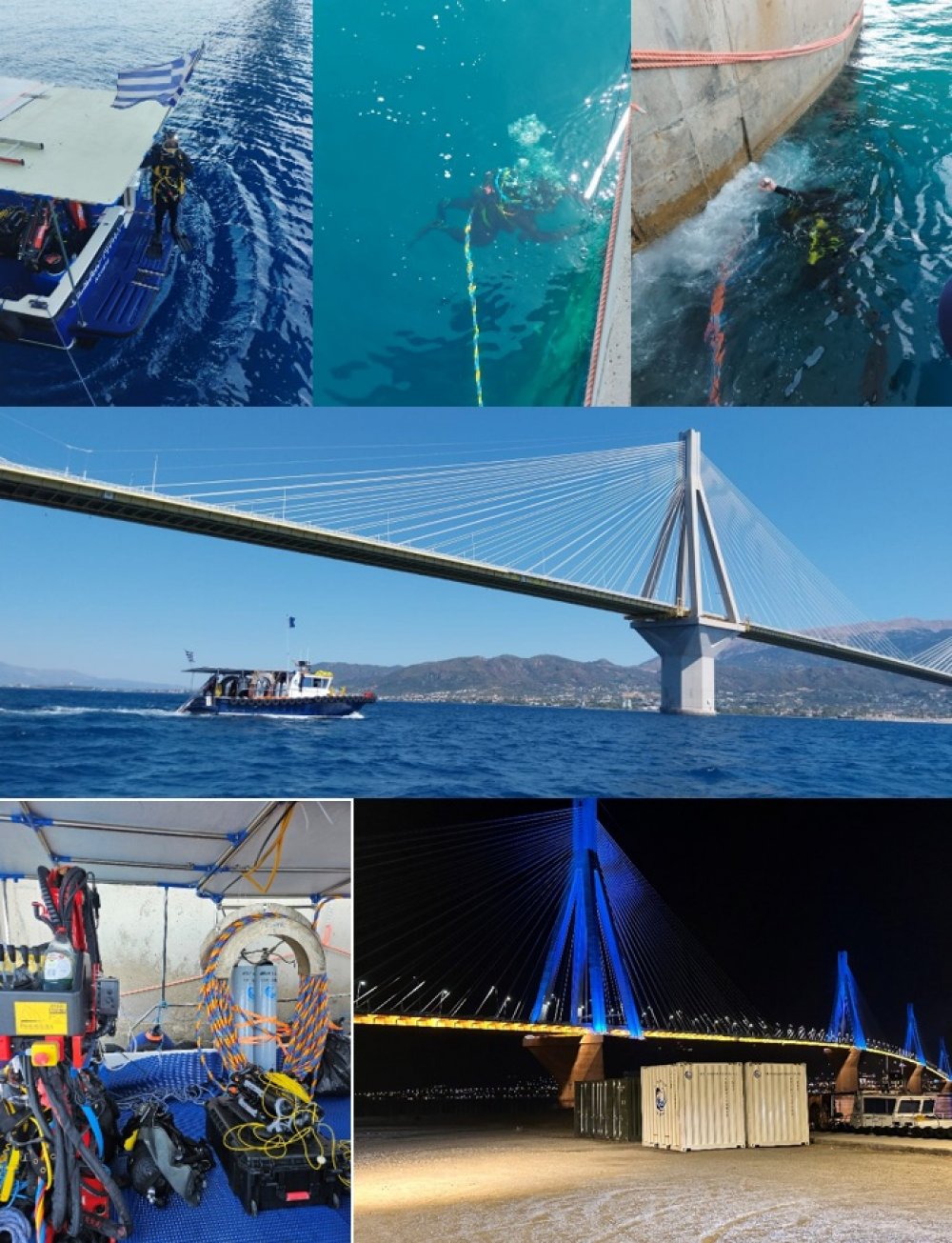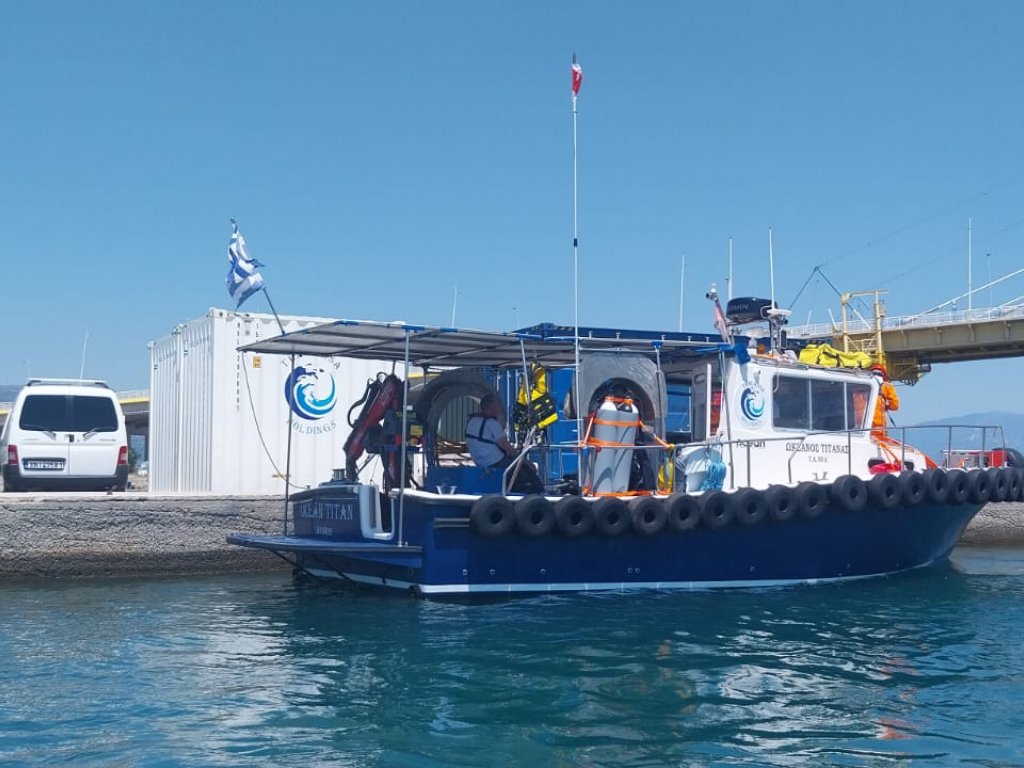
Rio - Antirrio Charilaos Trikoupis Bridge: Underwater Inspection & Maintenance.
The underwater inspections focused on two key areas:
A: Inspection and local concrete and maintenance works in the "splash zone" – This refers to the section from the sea surface down to a depth of 5 meters, where the structure is most exposed to chloride ions, which, when combined with oxygen, can accelerate the corrosion and decomposition of concrete. The design and construction of the bridge considered these harsh conditions. The primary goal was to inspect this vulnerable area and perform local maintenance where needed.
B: Assessment of the subsea section of the lightning protection and grounding system – This involved checking the integrity of the underwater components of the bridge's lightning protection system.
The inspections were conducted by divers equipped with a live audio-visual link to the bridge’s engineer, who monitored the process from a workstation aboard a diving support vessel. A Remotely Operated Vehicle (ROV) was also deployed to assist in the inspections. These operations, which require meticulous preparation and the use of specialized equipment over a period exceeding 1.5 months, are among the most demanding maintenance tasks due to the challenging conditions of the Rio-Antirio Strait, including strong sea currents, waves, and winds. The extensive surface area to be inspected adds further complexity to the process.
The underwater inspections are part of the wider inspection plans followed by the project, which includes the meticulous monitoring of 3.342 structural elements.
20 years after its construction, the Bridge stands not only as an iconic landmark, but also as a benchmark for technical and operational excellence in infrastructure projects, bringing together the global expertise of VINCI Highways with the experience and knowledge developed at the local concession level.


